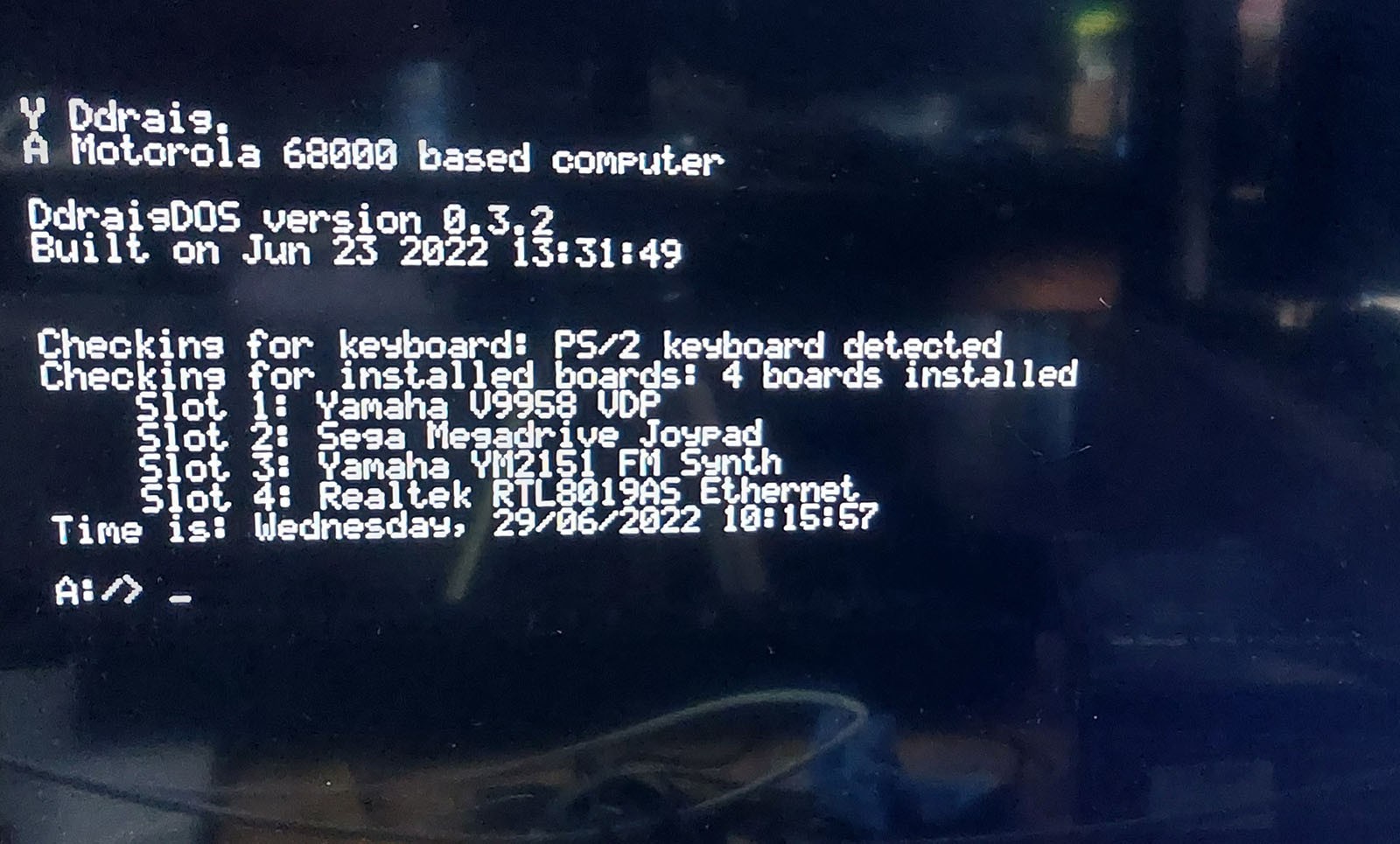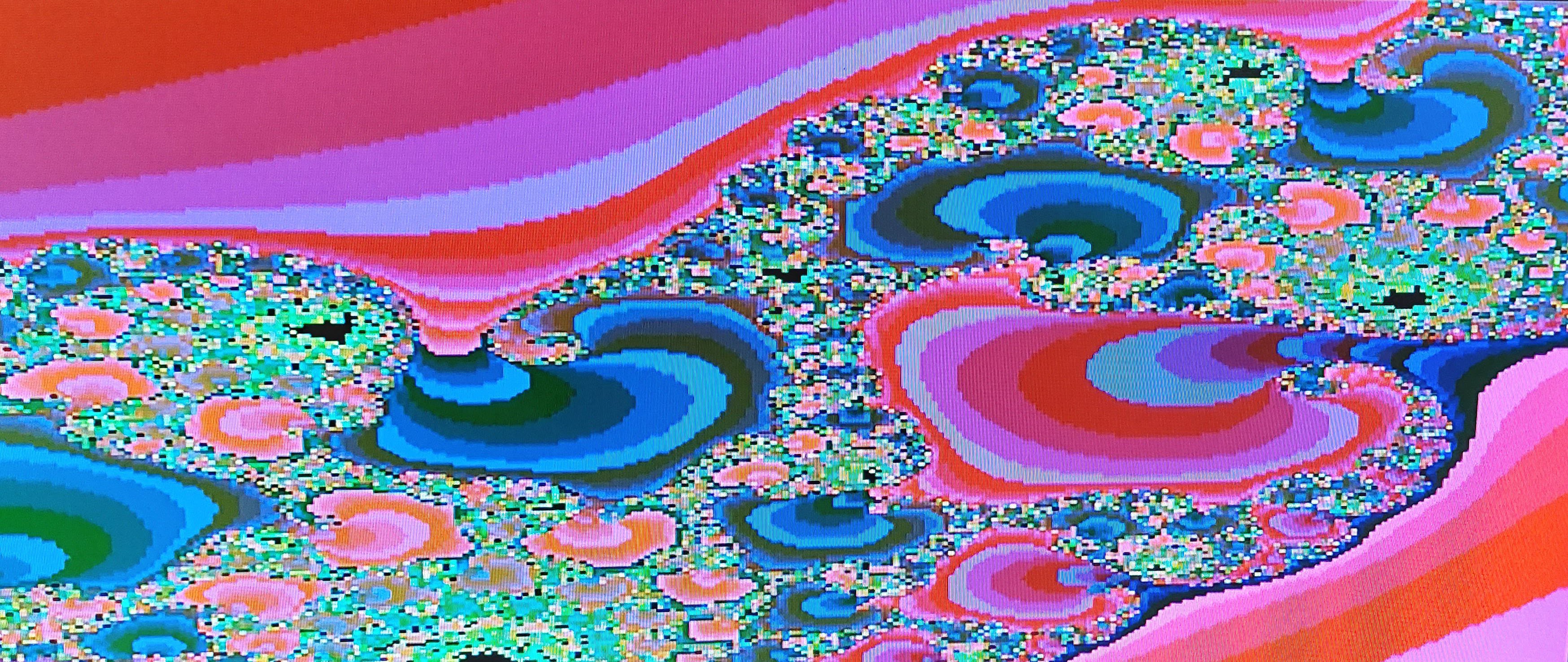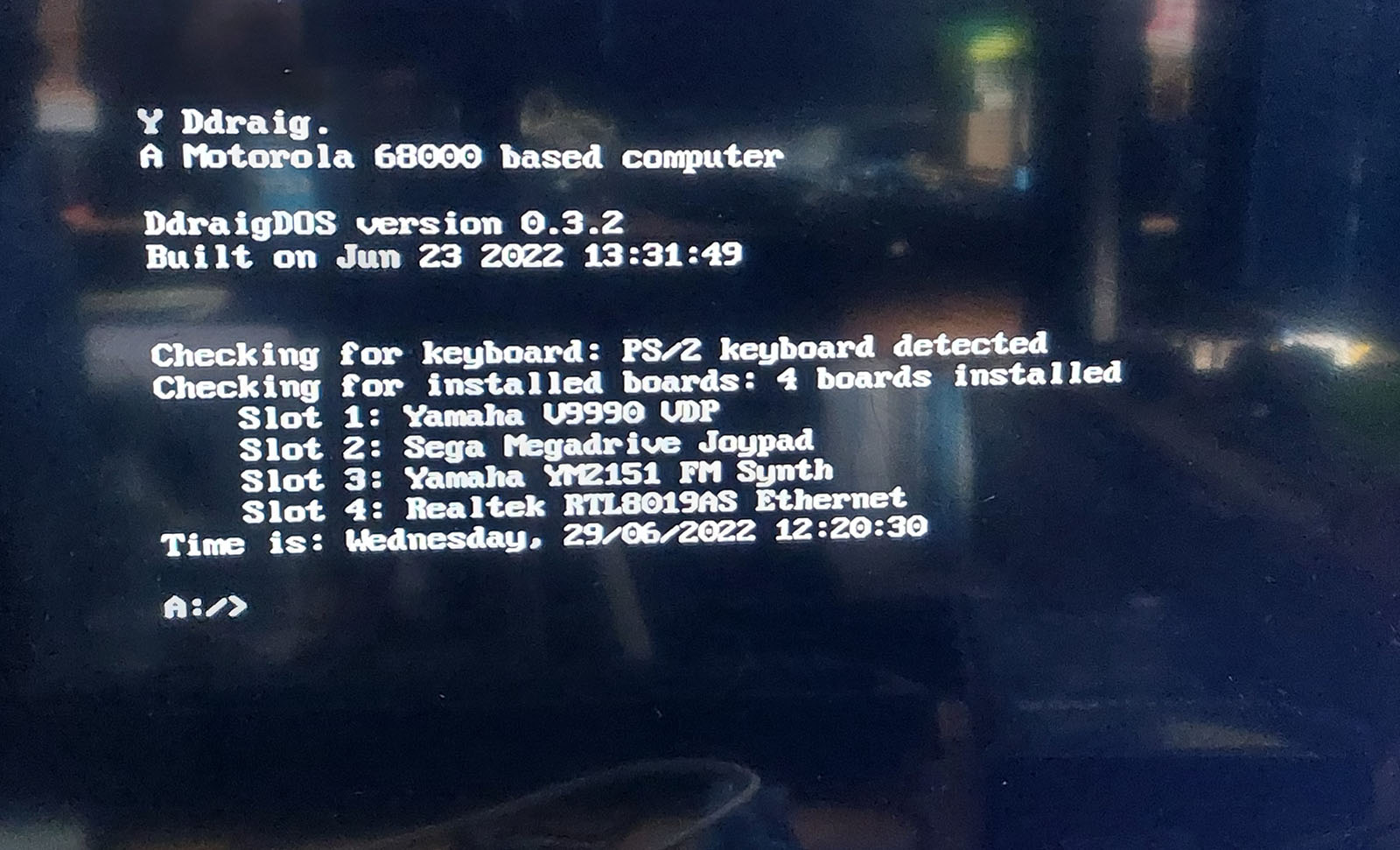Yamaha V9958 Video Display Processor
The Yamaha V9958 is the successor to the V9938 and TMS9918 that were commonly used in the MSX computer line with the V9958 appearing in the MSX2+.
It has the following specifications:
- VRAM: 128 KB + 64 KB of expanded VRAM
- Text modes: 80 x 24 and 32 x 24
- Resolution: 512 x 212 (16 colors out of 512) and 256 x 212 (19268 colors)
- Sprites: 32, 16 colors, max 8 per horizontal line
- Hardware acceleration for copy, line, fill, etc.
- Interlacing to double vertical resolution
- Horizontal and vertical scroll registers
The board has 3 different outputs. A composite output, S-Video output and a Xrgb Mini RGB compatible 8-pin mini DIN output aimed at SCART use. There is also an optional audio jack input that can supply audio the 8-pin din output so TV speakers can be used rather than an external speaker.
The V9958 board has 192K of RAM installed and uses a CXA2075M encoder to provide the video output signals.
This board was a challenge to get working under the operating system. I wrote several test programs that run under the monitor software to test the different video modes. Both graphics and text modes worked well. Unfortunately, when writing the driver for the OS I just could not get the text mode to display correctly. It was either a mix of some random characters or, more often than not, a black screen. Even though the OS code was mostly based on the code I wrote for the initial tests, it just didn’t seem to work. I eventually wrote some of the access routines for the V9958 in assembly and that did seem to fix the problem and it works reliably in text mode under the OS now.
I suspect that some of the issues that I’ve encountered here are down to timing in accessing the card and writing some of the code in assembler has improved things there. While the code worked well using the monitor software, for the most part there are no interrupts running unlike the OS. I still need to find the root cause of this as if it is a timing issue then as the OS evolves it could come back at some point.
V9958 Text Mode

V9958 Mode 7 - Mandelbrot

Yamaha V9990 Video Display Processor
The V9990 was intended as a successor to the V9958 (or supposedly a stripped down version of the never finished Yamaha V9978), but while the other chips in the range had backwards compatibility with the previous generation, the V9990 has some similar functionality but lacks the backwards compatibility.
Still, the V9990 has impressive specifications for the time, some of the features include:
Game Specifications:
For this type, there are two pattern display modes.
- P1 (Display resolution 256 x 212 2 screens)
- P2 (Display resolution 512 x 212)
Various highly advanced functions are available such as powerful sprite function and omnidirectional scroll function.
AV Specifications:
For this type, there are four kinds of bitmap display modes which can be displayed on the NTSC or PAL frequency monitor as follows.
- B1 (Display resolution 256 x 212)
- B2 (Display resolution 384 x 240)
- B3 (Display resolution 512 x 212)
- B4 (Display resolution 768 x 240)
Capable of doubling the resolution in the vertical direction by using interlace. Display is possible up to 32,768 colors/dot. Built-in color palette (64 colors selected out of 32,768 colors). Omnidirectional smooth scrolling is possible.
Like the V9958 card, the V9990 has Composite, S-Video and RGB output. The board has 512K of RAM installed and again uses CXA2075M encoder to provide the video output signals.
V9990 Text Mode

V9990 Pattern mode test
 Stephen Moody
Stephen Moody
Discussions
Become a Hackaday.io Member
Create an account to leave a comment. Already have an account? Log In.